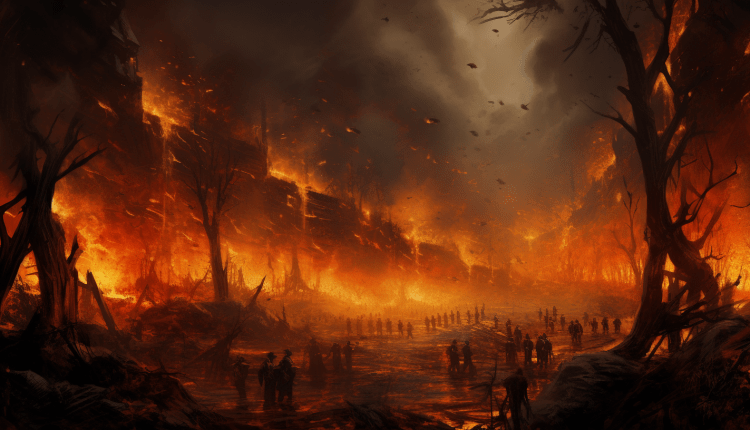The companions of the trench
The Human Furnaces
قُتِلَ أَصْحَـٰبُ ٱلْأُخْدُودِ ٤
ٱلنَّارِ ذَاتِ ٱلْوَقُودِ ٥
إِذْ هُمْ عَلَيْهَا قُعُودٌۭ ٦
وَهُمْ عَلَىٰ مَا يَفْعَلُونَ بِٱلْمُؤْمِنِينَ شُهُودٌۭ ٧
وَمَا نَقَمُوا۟ مِنْهُمْ إِلَّآ أَن يُؤْمِنُوا۟ بِٱللَّهِ ٱلْعَزِيزِ ٱلْحَمِيدِ ٨
The Quran states in Surah Al-Buruj, verse 4: ‘The companions of the trench were [indeed] killed.’
The term ‘Al-Akhduud’ refers to the great trench in the earth or the ditch. Here, it signifies those trenches filled by the disbelievers with fire to deter the believers from their faith and to revert them to the disbelief and shadows they were upon.
But when did this happen? In which community? Did it occur once or multiple times? In which region or regions?
Among the commentators and historians, there has been a prolonged debate regarding the answers to these questions.
The well-known interpretation is that it refers to the story of Dhū Nawās, the last king of Ḥimyar in Yemen. Dhū Nawās had converted to Judaism, and the Ḥimyarites had allied with him on the Jewish faith. He called himself Yusuf and ruled in that manner for a period. Later, it was reported that remnants of a Christian community in Najran, north of Yemen, persisted in adhering to the Christian faith, following the Gospel of Jesus (peace be upon him). Dhū Nawās, driven by his religious zeal, decided to march towards them, persuade them to embrace Judaism, and forcibly incorporate them into it. However, they resisted, chose death over accepting Judaism, and were subsequently put into a trench. Wood was gathered, and a fire was ignited in it. Some were burned alive, while others were killed by the sword. Their fate varied, but the total number of those killed and burned in the fire was reported to be twenty thousand.
Another account adds that a man from the Christian community of Najran managed to escape and joined the Romans. He reported Dhū Nawās’s actions to Caesar.
Upon hearing this, Caesar said: ‘Your land is far, but I will write a letter to the Christian king of Abyssinia (Ethiopia) and request his assistance.’
He then wrote his letter to the Abyssinian king, asking him to avenge the blood of the Christians shed in Najran. When the Abyssinian king read the letter, he was deeply moved and resolved to seek vengeance for the martyrs of Najran.
He sent his troops to Yemen, where they confronted Dhū Nawās’s army. After a fierce battle, they defeated him, and Yemen became a province under the dominion of Abyssinia.
Some commentators mention that the length of the trench was forty cubits, and its width was twelve cubits (each cubit approximating half a meter or sometimes a full meter).
It is said that there were seven trenches, each with the dimensions mentioned.
From what we have discussed, it becomes evident that divine punishment befell those who tortured the believers, and they were avenged in their worldly life for the innocent blood they had shed. The punishment of the fire of the Hereafter awaits them.
The first perpetrators of human furnaces in history were the Jews. This heinous practice spread through the hands of tyrants and criminals, eventually encompassing the Jews themselves, as witnessed in Nazi Germany when a large number of Jews were burned in Hitler’s furnaces, as is well known. They tasted the torment of the flames in their worldly life before the Hereafter.
Shame and punishment also befell Dhū Nawās, the Jew, who was the founder of this despicable crime. What we have mentioned is what became famous among historians and interpreters from the story of the companions of the trench.
@islam4u.pro
[insta-gallery id=”0″]
Source: “Stories of the Quran” by Ayatollah Sheikh Nasir Makarem Shirazi.


